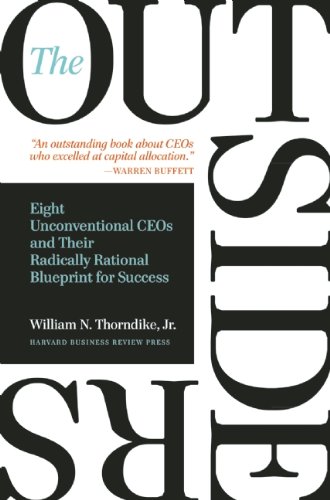

This article is an excerpt from the Shortform summary of "The Outsiders" by William N. Thorndike, Jr. Shortform has the world's best summaries of books you should be reading.
Like this article? Sign up for a free trial here .
Investors have been following in the footsteps of business giant Warren Buffett for decades. But what makes Buffett’s company, Berkshire Hathaway history has been marked by constant success and growth. But what makes this happen?
Berkshire Hathaway is one of the most successful companies of the modern age, and Buffett is a top investor, adviser, and business leader. Find out Berkshire Hathaway’s history, how it became the company you know today, and how Buffett continues to pursue company growth and excellence.
What Is Berkshire Hathaway?
Warren Buffett has garnered staggering returns over the 50-plus years of Berkshire Hathaway history. Starting with buying a textile company in 1965, Buffett grew Berkshire Hathaway into one of the world’s largest companies. Over the course of Berkshire Hathaway history, Buffett’s decisions have made the company into the powerhouse it is today,
Over the yers of Berkshire Hathaway’s history, Buffett excelled in all manners of investments—in both public and private companies, with ownership of both minority and total stakes. He famously made use of insurance float to fund investments in higher-return companies, held a small basket of companies for very long periods of time, and acted aggressively when everyone else was ducking for fear. This proved to be an essential part of Berkshire Hathaway’s performance throughout the company’s history.
Berkshire Hathaway History Overview
Born in 1930 in Omaha, Nebraska, Warren Buffett was the son of a stockbroker and the grandson of a grocery store owner. His early entrepreneurial activities included paper routes and reselling soft drinks.
When he was 19, he read The Intelligent Investor by Benjamin Graham, which converted him into value investing—buying companies that were cheap relative to their intrinsic value (which was based on the company’s balance sheet). He began investing the profits from his ventures, worth about $10,000 in today’s dollars.
When pursuing his MBA, he chose to go to Columbia, where Graham was a professor. After graduating, Buffett asked Graham for a job at his investment firm, but Graham declined. Buffett returned to Omaha to work as a stock broker, where he continued researching investments. Here he happened on GEICO, an insurance company that featured competitive advantages and a great value for the price. He invested most of his money in GEICO.
In 1954, Graham finally offered Buffett a job, and Buffett continued researching underpriced public companies, which were often cheap, low-quality companies (Buffett called them “cigar butts”). When Graham closed his firm in 1956 to focus on other interests, Buffett started his own fund in Omaha, raising $105,000 (a bit under $1 million today). Over the next decade, Buffett continued investing by Graham’s value philosophy, achieving an average 30% annual return even without using debt.
Berkshire Hathaway History: Buffett Refines His Investing Style
But in the mid-1960s, Buffett changed the course of Berkshire Hathaway history. Buffett began deviating from the value method, instead investing in high-quality companies that had a strong competitive profile and long-term prospects. His early investments in this style included Disney and American Express.
In 1965, Buffett purchased the textile company Berkshire Hathaway, a 100-year-old family business, through a hostile takeover. The company was only worth $18 million in enterprise value and was in a commodity business, but Buffett saw it as a platform to build his investments around. After installing a new CEO, who optimized operations, Berkshire Hathaway had $14 million of profit.
Buffett used this profit to buy National Indemnity, an insurance company that generated a large amount of float—the value of premiums received before they are paid out as claims. Insurance companies rely on investment returns from float to generate a profit; sometimes years can pass between when premiums are received and when they need to be paid out. In essence, Berkshire was able to receive cash at 3% and invest it at 13%. Buffett used this float to invest in businesses, sometimes buying them outright. His purchases included a newspaper in Omaha and a local bank in Illinois.
His investing style was further honed in the 1970s, as inflation was a common concern among investors. The typical thinking was that hard assets like gold were the best protection against inflation. Buffett saw differently, and developed key components of his investment thesis:

———End of Preview———
Like what you just read? Read the rest of the world's best summary of William N. Thorndike, Jr's "The Outsiders" at Shortform .
Here's what you'll find in our full The Outsiders summary :
- What great CEOs like Warren Buffett do that average CEOs don't
- How to master the art of capital allocation
- How to be a great manager that your team is excited to work with






